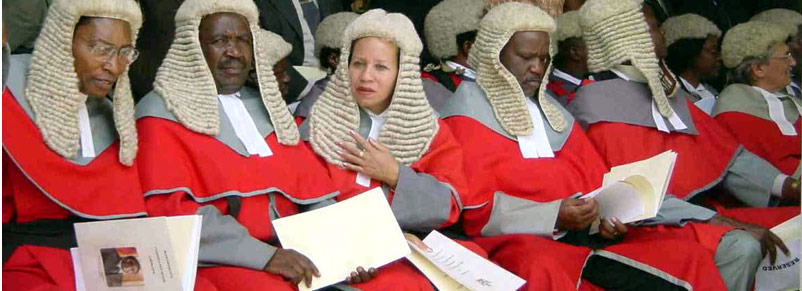Romeo Zibani who challenged the Chief Justice public interviews by the Judicial Services Commission is back in court accusing the Chief Justice of abusing office.
In his founding affidavit, Zibani lists President Robert Mugabe, Minister of Justice and Vice President Emmerson Mnangagwa, outgoing Chief Justice Godfrey Chidyausiku and retired Justice Vernanda Ziyamb as 1st, 2nd, 3rd and 4th respondents respectively. He argues that Chidyausiku abused office by appointing Ziyambi as part of the panel that upheld the Judicial Services Commission’s appeal against High Court judge, Justice Charles Hungwe’s interdict order had suspended the interviews by the JSC to shortlist candidates to succeed Godfrey Chidyausiku as the new chief justice. Zibani argues Chidyausiku contravened Section 168 (2) of the Constitution of Zimbabwe by appointing Ziyambi thus making the judge null and void. Part of his founding affidavit reads:
I submit that the 4th Respondent was not legible for the appointment, having reached the age of seventy (70) years and having retired in 2016. Her appointment was therefore unconstitutional. The appointment is in contravention of Section 186 (2) which reads as follows:
“186. Tenure of Office of Judges (2) Judges of the Supreme Court, the High Court and any other Judges hold office from the date of their assumption of office until they reach the age of seventy years, when they must retire.”Retired Justice Ziyambi, having reached the age of seventy (70) years, was not eligible for appointment. The Chief Justice, I submit with respect, acted unconstitutionally by appointing a retired Judge who was not eligible for appointment. The Chief Justice must have been aware of Section 186 (2) of the Constitution, but nevertheless decided to abuse his office by making an unlawful and unconstitutional appointment and purported to act in terms of the Constitution. I submit further that when the Supreme Court sat to hear my case on the 13th of February 2017, it was not properly constituted as there were only (2) two Judges qualified to hear the case. The sitting did not constitute a Supreme Court bench as is required by law and therefore the judgment by that “Court” is a nullity.
More: Jonathan Moyo on Twitter



Back to top